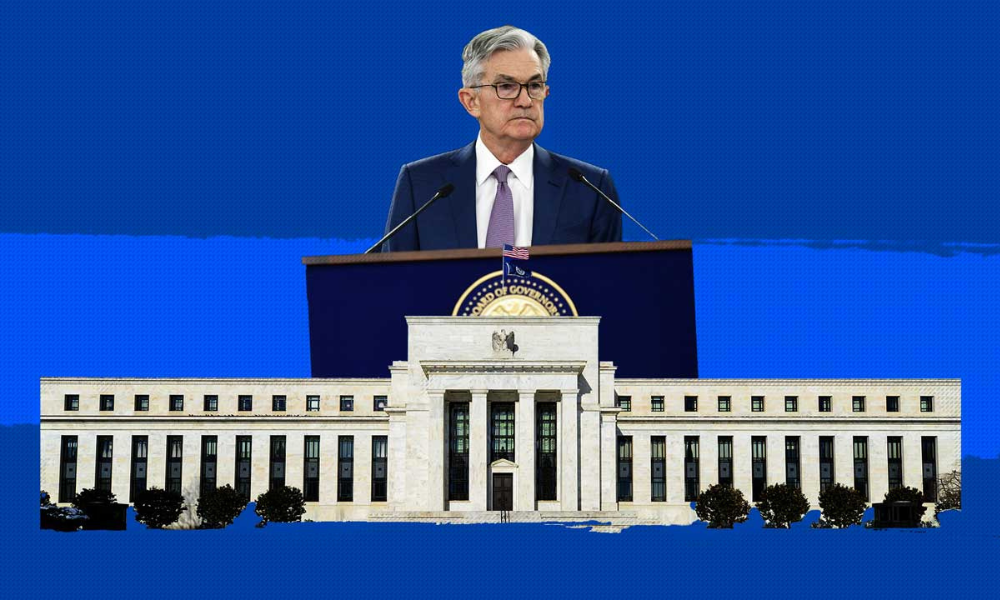
The Federal Reserve said on Wednesday that it is raising its benchmark interest rate by three-quarters of a percentage point, the sharpest hike since 1994, as it seeks to combat the fiercest surge in U.S. inflation in four decades.
The U.S. central bank set its target rate in the range of 1.5 to 1.75%. The federal funds rate, which controls how much banks pay to borrow money from each other, affects borrowing costs for consumers and businesses.
The Fed had previously suggested it was likely to boost rates by half a percentage point at each of its three meetings this year, but recent signals that inflation is accelerating spurred policymakers to move more aggressively to slow economic growth in a bid to tame prices.
Top THREE Award-Winning Brokers in 2022 LiteFinance IC Markets Avatrade |
Stocks rose on the news. The S&P 500 gained 1.3% after the announcement, while the blue-chip Dow climbed 1% and the tech-heavy Nasdaq added 2.3%.
"The Federal Reserve did not disappoint market expectations, responding to last week's upside surprise in consumer prices and a rise in inflation expectations, which suggested more aggressive action," Rubeela Farooqi, chief U.S. economist with High-Frequency Economics, said in a report.
The Fed has rapidly shifted gears this year from propping up the economy during the pandemic to trying to choke off a surge in consumer prices, which have been rising at the fastest rate since the 1980s.
Yet the Fed's move to jack up interest rates carries risks for the job market, consumers and businesses. Sharply higher borrowing costs could snuff out economic growth and cause a "hard landing," or even a serious recession.
| 🔷 Wise Traders Best Choice - AssetsFX 🔷 |
That would drive up unemployment and undermine wage growth just as millions of U.S workers are getting back on their feet following the economic crash caused by the pandemic.
More broadly, wages for most workers have been stagnant for decades, leading to growing inequality and political instability. Using monetary policy to keep a lid on pay increases, while potentially a check on inflation, may do little to mute the soaring demand that is chiefly responsible for driving up inflation.
Powell said Wednesday that reducing the number of job openings, which would weaken the leverage workers have to demand better pay, would help stabilize the economy.
"You have two job vacancies, essentially, for every person actively seeking a job, and that has led to an imbalance in job negotiations," he said.
While wages are not the main reason prices have jumped in the past year, "going forward, they'll be critically important," he added, saying, "We have to restore price stability. It's the bedrock of the economy. Without it, the economy won't work. People's wages will be eaten up."
The economy has slowed sharply this year, shrinking 1.4% in the first quarter amid a drop in U.S. exports and reduced federal spending. The Fed expects the nation's gross domestic product to expand 1.7% this year and in 2023 as higher interest rates act as a brake on economic activity.
Economic growth remains solid, with unemployment near a 50-year low of 3.6% and businesses continuing to hire. But the steepest inflation since 1981 is hitting households hard and causing consumer spending to shrink, with the government reporting that retail sales fell in May.
The 0.3% decline, the first such drop since December, is a sign that high gas prices may be forcing consumers to spend less on other purchases.
Hot Topics
Biden To Meet With Mohammed Bin Salman In July Visit To Saudi Arabia
China Warns Of Risk Of War Over Taiwan While Pledging Peace
Gas Prices Likely Kept US Inflation Painfully High
Last week, a sentiment survey by the University of Michigan found that Americans' expectations for future inflation are rising, a worrisome sign for the Fed because expectations can become self-fulfilling. Source: CBS News...